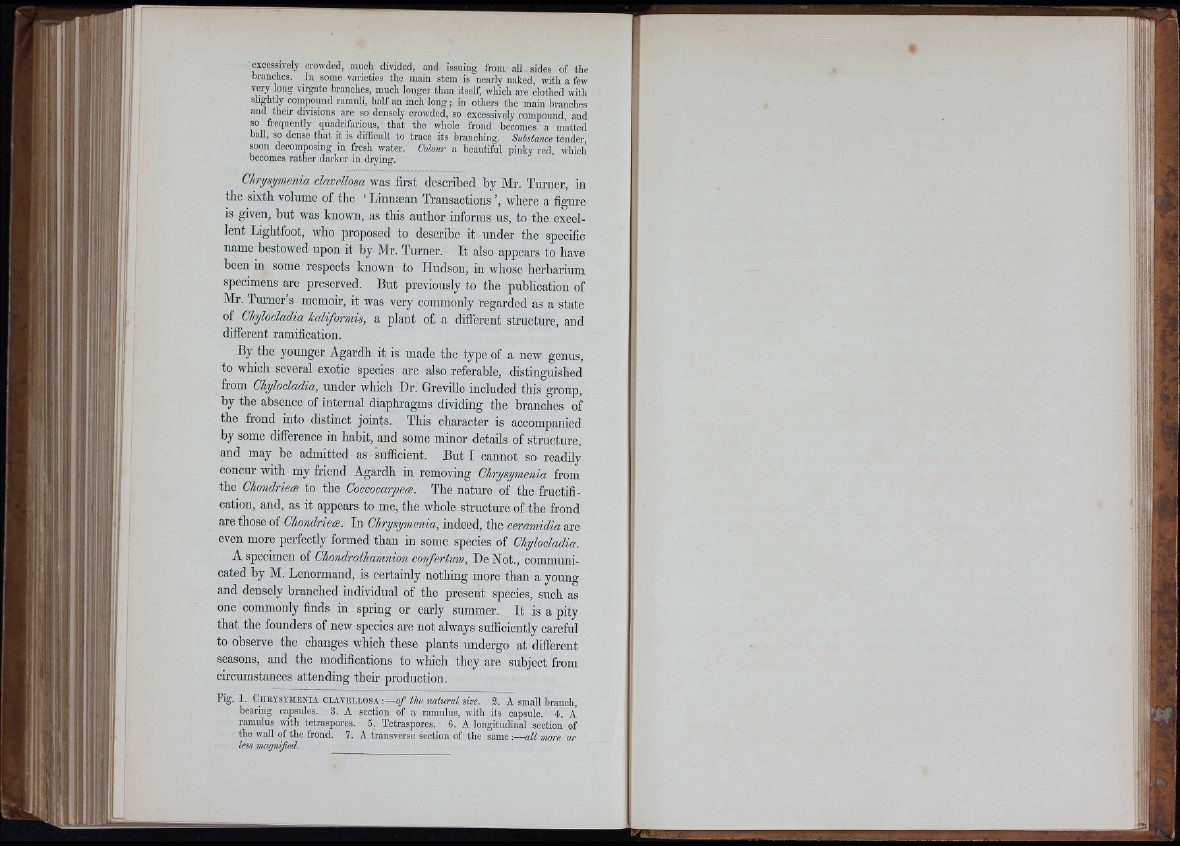
t
excessively crowded, much divided, and issuing from all sides of the
branches. In some varieties the main stem is nearly naked, with a few
very long virgate branches, much longer than itself, wdiich are clothed with
sbghtly compound ramuli, half an inch long ; in others the main branches
and their dmsions are so densely crowded, so excessively compound, and
so frequently quadrifarious, that the whole frond becomes a matted
ball, so dense that it is difficult to trace its branching. Suhstance tender,
soon decomposing in fresh water. Colour a beautiful pinky red, which
becomes rather darker in drying.
Clmjsymenia clavellosa was first described by Mr. Turner, in
tbe sixtb volume of tbe ‘ Linnæan Transactions ’, wbere a figure
is given, but was known, as this author informs us, to the excellent
Ligbtfoot, who proposed to describe it under the specific
name bestowed upon it by Mr. Turner. It also appears to have
been in some respects known to Hudson, in whose herbarium
specimens are preserved. But previously to the publication of
Mr. Turner’s memob', it was very commonly regarded as a state
of Chylocladia haliformis, a plant of. a different structure, and
different ramification.
By the younger Agardh it is made the type of a new genus,
to which several exotic species are also referable, distinguished
from Chylocladia, under which Dr. Greville included this group,
by tbe absence of internal diaphragms dividing the branches of
the frond into distinct joints. This character is accompanied
by some difference in habit, and some minor details of structure,
and may be admitted as sufficient. But I cannot so readily
concur with my friend Agardh in removing Chrysymenia from
the Chondrieæ to the Coccocarpeæ. The nature of the fructification,
and, as it appears to me, the whole structm-e of the frond
are those of Chondrieæ. In Chrysymenia, indeed, the ceramidia are
even more perfectly formed than in some species of Chylocladia.
A specimen of Chondrothamnion confertum, De Not., communicated
by M. Lenormand, is certainly nothing more than a young
and densely branched individual of the present species, such as
one commonly finds in spring or early summer. It is a pity
that the founders of new species are not always sufficiently careful
to observe the changes which these plants undergo at diiferent
seasons, and the modifications to which they are subject from
circumstances attending their production.
Fig. 1. CnaysYMEKiA c l a v e l l o s a -.— o f the natural size. 2. A small branch,
bearmg capsules. 3. A section of a ramulus, with its capsule. 4. A
ramulus with tetraspores. 5. Tetraspores. 6. A longitucbnal section of
the wall of the frond, 7. A transverse section of the same :— all more or